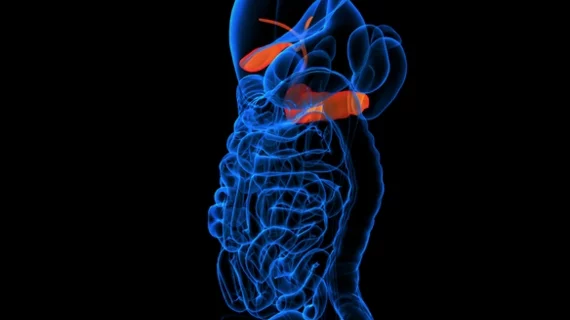Following a patient-specific contrast media protocol during CT of the pancreas can enhance image quality, reduce contrast volume and reduce radiation dose, according to a new study published in Academic Radiology.
The authors studied data from 220 consecutive patients receiving pancreatic CT. Each exam was performed using one of two methods: either contrast material was injected via timed bolus triggering (Protocol A) or a patient-specific contrast media protocol was timed at the gastroduodenal artery (Protocol B).
Overall, mean pancreatic density measurements in each pancreatic segment during both the arterial and venous phase were “significantly higher” in Protocol B. Looking at arterial circulation, the mean arterial opacification was higher in Protocol B with the abdominal aorta, superior mesenteric artery, gastroduodenal artery and splenic artery. In addition, the contrast media volume and effective radiation dose in Protocol B was lower than in Protocol A.
“We present a patient-specific contrast media injection protocol that demonstrates significant improvements in the visualization of the pancreatic parenchyma during the pancreatic CT protocol with a decreased radiation dose,” wrote Charbel Saade, PhD, American University of Beirut Medical Center in Beirut, Lebanon, and colleagues. “This optimized protocol has the potential to improve the detection and characterization of small pancreatic lesions and improve clinical outcomes for patients with neoplastic disease.”
The decrease in radiation dose is noteworthy, Saade and colleagues explained, because improvements in image quality often mean an increased radiation dose.
“This work demonstrates an exception, where the radiation dose was actually reduced with reduced contrast media volume,” the authors wrote. “This dose savings offers significant benefits to the examination, since radiation levels adjacent to anatomical structures such as the adrenal glands, lung, and liver that are radiosensitive, are reduced.”
The authors noted their study had limitations. The same patients were not treated with both protocols, for instance, and MRI and histopathology “could further clarify the diagnostic accuracy and patient outcome on the basis of our patient-specific contrast media protocol.”

